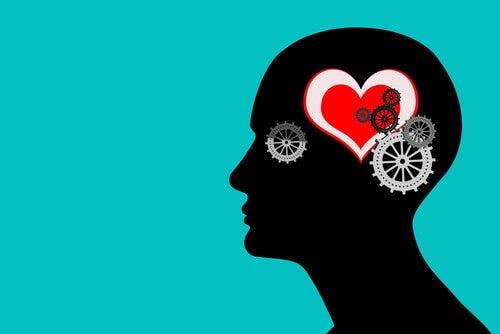Emotions Are the Driving Force of Your Life


Written and verified by the psychologist Valeria Sabater
At the end of the day, humans are emotional beings who learned to think just a little over one hundred thousand years ago. Today, the strength of your emotions often still precedes any conscious thoughts. They have always been the driving force, a set of processes that guaranteed human survival.
This isn’t always an easy idea to process. That’s because a lot of people prefer to think that they’re in total control of their actions and decisions. Nevertheless, a powerful universe of emotions directs a large part of your behavior, although you aren’t always aware of it.
Let’s reflect on this idea for a minute. You wake up in the morning in a particular mood. Sometimes, you feel motivated, while other times your energy is low. Whatever your emotions, the way you feel affects your whole day.
The drive that propels every step you take, big or small, is filtered by emotions. While it’s true that we try to rationalize our decisions after the fact, emotions are the initial driving force, and they leave their mark. In addition, you can’t deny that what you buy is motivated by your emotions, as are your social and emotional relationships.
The transcendence, permeation, and complexity of emotions inform everything you do and the way you relate to your surroundings. This is an undeniable fact.
“I don’t want to be at the mercy of my emotions. I want to use them, to enjoy them, and to dominate them.”
-Oscar Wilde, The Portrait of Dorian Gray-

Your emotions are the driving force of everything you do
The idea of gaining control of your emotions is common in practically every self-help book out there. The books (and the general public) often use words such as “manage” and “control”. When you see those words, it’s easy to think that emotions are like cars or accounts that you simply have to know how to administrate.
Well, if that’s indeed the case, you can’t manage or control something if you don’t understand what you’re dealing with. To that end, neurologist Antonio Damasio has written books such as Looking for Spinoza and The Strange Order of Things that shed some light on the subject.
Your emotions want you to survive and do well
An emotion is basically a chemical and neural response to a stimulus. It’s your brain reaction to a stimulus that requires some kind of action on your part. For example, you see a snake. You know it could be dangerous, so you get away from it “without stopping to think”. This internal chemical response triggers changes in your body with one goal in mind: to help you execute the appropriate behavioral response.
The purpose of this emotional force is to help you react to things that happen around you. It ensures your survival and helps you return to homeostasis – in other words, to a state of balance and well-being. That being said, most people have emotional problems because they don’t know what their emotions are telling them.
Fear, sadness, anger, frustration… Many of these emotions we label “negative” also serve a certain purpose. They’re there to warn you that something is wrong and that you need to react. However, it’s easy and common to leave your emotions there, in the deepest recesses of who you are, and let them upset your balance and well-being.

Emotions, feelings, and thoughts
Emotions always come before feelings, and they often precede even your thoughts. In Damasio’s book Looking for Spinoza and How the Brain Works by Francisco Mora, the authors talk about the importance of understanding the difference between emotions and feelings. Emotions, they explain, are from the body, while feelings come from the mind.
The first thing you experience is emotion. It’s the first reaction to anything that happens to you. The mental experience that those changes trigger in your body is what shapes your feelings. Feelings can be a motivating force or they can be a stumbling block.
In the last stage of human evolution, we’ve learned how to better understand and control our emotions. The development of the frontal and prefrontal lobes has allowed humans to be aware of feelings and emotions. That has shaped more refined, creative, rational, and powerful behaviors.
After all, don’t forget that you can’t separate emotions and thoughts. Together, they provide the driving force that propels you through life. Emotions that are controlled by thoughts tend to shape innovative and positive behaviors.
Your emotions should be your allies, not your enemies
You can’t deny that emotions are the driving force of your life. To a great extent, they’re what informs most of your behavior. Likewise, your feelings are what gives you hope and revitalizes you when they align with your thoughts. That’s why it’s important to know not only what an emotion is, but also how to manage them, channel them, and make them work in your favor.
This isn’t an easy task. It requires time and self-awareness. You need to be connected to your inner-self and respond appropriately. As Daniel Goleman so aptly explains, people have two minds: one that thinks and another that feels. Happiness and true well-being come when your thinking and feeling minds work together.
All cited sources were thoroughly reviewed by our team to ensure their quality, reliability, currency, and validity. The bibliography of this article was considered reliable and of academic or scientific accuracy.
- Damasio, Antonio (2005) En busca de Spinoza. Madrid: Crítica
- Mora, Francisco (2005) Cómo funciona el cerebro. Madrid: Alianza Editorial
This text is provided for informational purposes only and does not replace consultation with a professional. If in doubt, consult your specialist.








